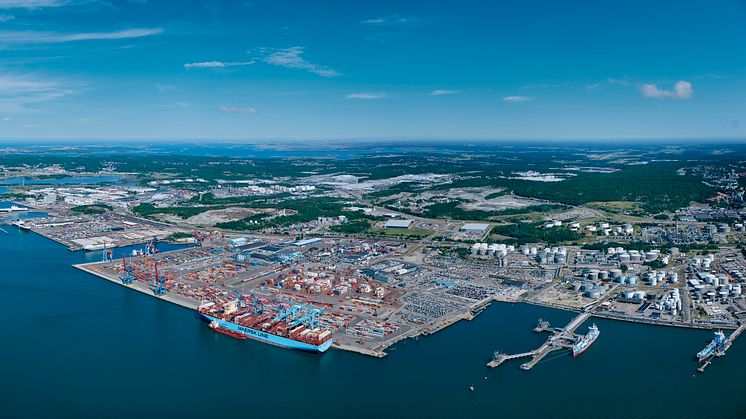
Press release -
Port of Gothenburg freight volumes signify stability and revival
Freight volumes at the Port of Gothenburg have remained stable, despite the ongoing effect the Covid-19 pandemic is having on world trade. Container volumes remain unchanged while other segments are regaining lost ground following the downturn earlier in the year. This can be seen from the volume report for the year to September.
Container volumes in TEUs (twenty-foot equivalent units) were stable through to September this year. The fall of nine per cent for the third quarter came about at mid-year. Although Swedish industry managed to maintain momentum during the spring, the Covid-19 reaction finally filtered through during the summer months, with a subsequent impact on the number of containers passing through the port.
“The outlook has been brighter since September and that will definitely be the case in the months ahead. Despite obvious concern about a possible second wave of the pandemic and the reverberations, higher volumes are forecast, the market is beginning to shape up, and we expect to close the year in the black,” said Elvir Dzanic, Gothenburg Port Authority chief executive.
By national and international standards, container handling at the Port of Gothenburg continued to hold its own. Figures published by the industry organisation Ports of Sweden show that the port has increased its share of the Swedish market by two per cent this year. The ten largest European ports have took an eight per cent fall on average during the first half of the year..
Recovery in ro-ro and vehicle segments
The number of ro-ro units handled through to September was down 11 per cent on the same period in 2019. Even though the year started off with a slump, the third-quarter figure (-6%) is a tentative sign that the negative curve is levelling off.
New vehicle handling at the Port of Gothenburg fell by 19 per cent during the first nine months. The fall in the wake of Covid-19 was mainly during the second quarter with handling volumes down by almost half. Despite the recovery during the third quarter, year-on-year figures reveal a decline of eight per cent.
Energy productsHandling of energy products was up by three per cent for January-September compared with the same period last year. The increase can be attributed to large-scale stockpiling of energy products during the spring. However, stockpiling has slowed during the autumn, and the situation has been compounded further by low margins at the refineries. Handling during the third quarter fell by 26 per cent compared with Q3 2019.
Passenger and cruise operations
Not surprisingly, Covid-19 had the greatest impact on passenger traffic, both cruise and ferry. The summer peak season for both segments failed to materialise. This is reflected in a 66 per cent fall in ferry passengers through to September.
The Port of Gothenburg was among the first in Europe to receive cruise ships since the pandemic brought everything to a standstill. The first ships called at the port in September, albeit subject to restrictions and with only a limited number of passengers on board. Further calls are scheduled for the coming months.
Port of Gothenburg freight volumes, January-September and Q3 2020
Jan-Sept 2020 | Jan- Sept 2019 | Jan-Sept | July-Sept 2020 | July-Sept 2019 | July-Sept comparison, % | ||
Containers, TEU | 579,000 | 579,000 | 0 | 177,000 | 194,000 | -9 | |
Rail | 334,000 | 343,000 | -3 | 103,000 | 116,000 | -11 | |
Ro-ro units | 374,000 | 420,000 | -11 | 121,000 | 129,000 | -6 | |
New vehicles | 157,000 | 193,000 | -19 | 54,000 | 58,000 | -8 | |
Ferry passengers | 489,000 | 1,418,000 | -66 | 179,000 | 677,000 | -74 | |
Cruise ship calls | 5 | 34 | -85 | 5 | 33 | -85 | |
Energy products, m tonnes | 16.4 | 15.9 | 3 | 4.6 | 6.3 | -26 |
Topics
Fact file: Port of Gothenburg
The Port of Gothenburg is the largest port in the Nordic region. 30 per cent of Swedish foreign trade passes through the Port of Gothenburg as well as half of all container traffic.
The Port of Gothenburg is the only port in Sweden with the capacity to receive the world's largest container vessels and has the broadest range of shipping routes within and outside Europe. The 25 rail shuttles that depart each day mean that companies throughout Sweden and Norway have a direct, environmentally smart link to the largest port in the Nordic region. The Port of Gothenburg has terminals for oil, cars, ro-ro, containers and passengers.


